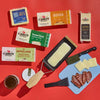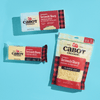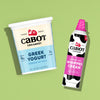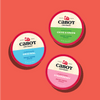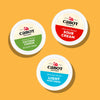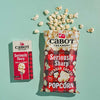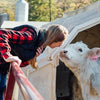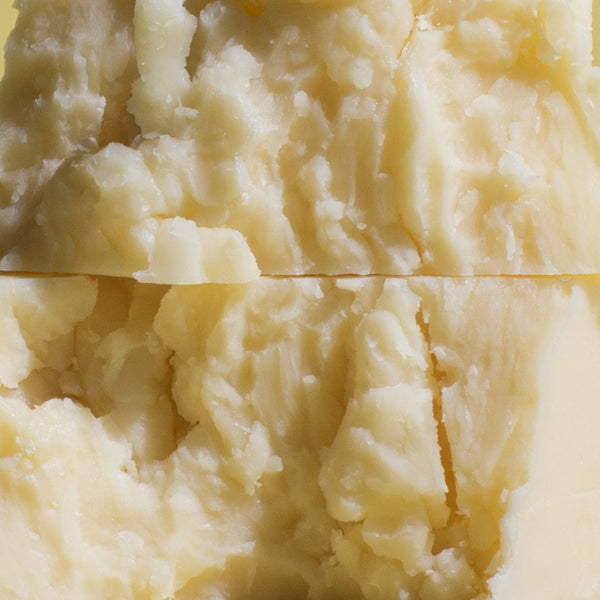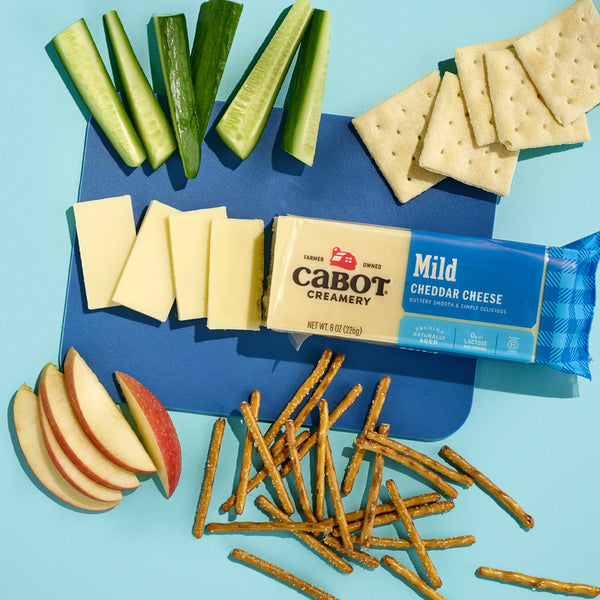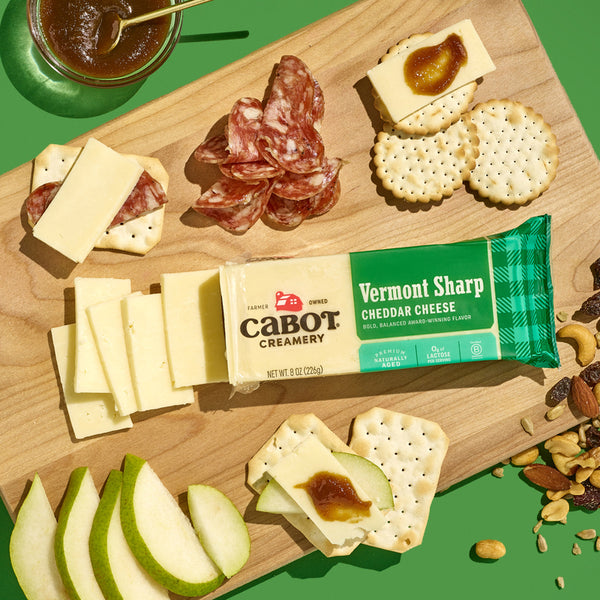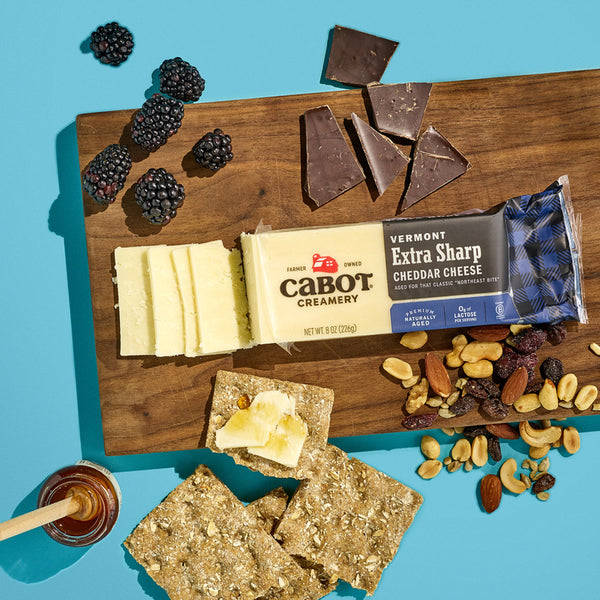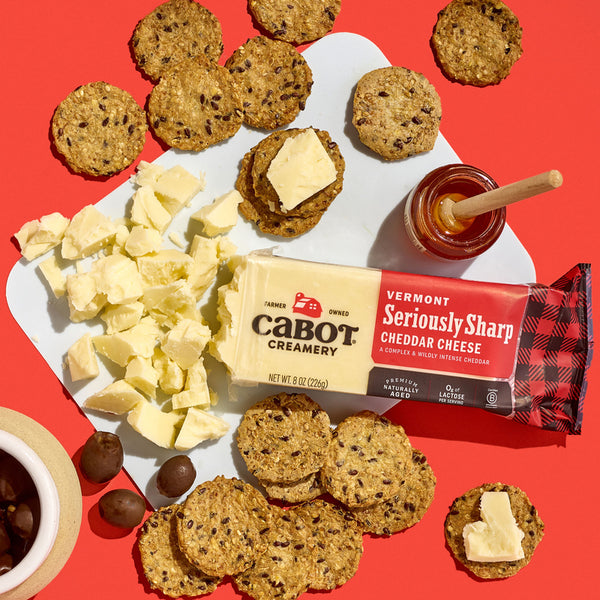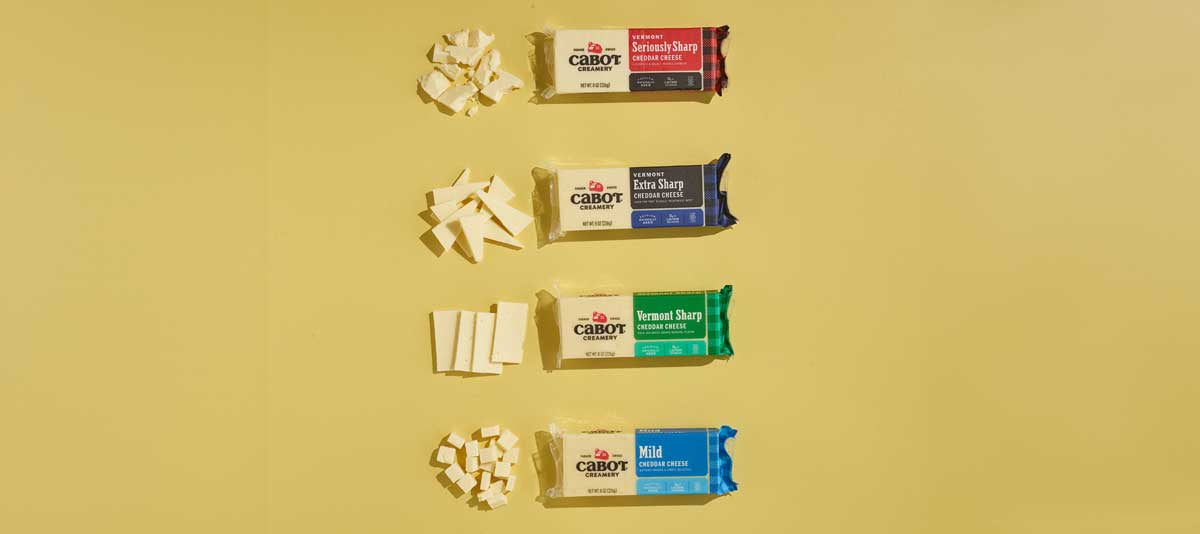
Cheese Sharpness Scale: What's the Sharpest Cheddar?
Whether you're cooking a weekday dinner or preparing for a celebration, cheddar makes everything better. Often used in soups, dips, and appetizers, cheddar is packed with flavor, making it a versatile ingredient. It also tastes great on top of crackers or as part of a fruit and cheese board.
What makes cheddar cheese sharp?
All cheeses contain the same ingredients: milk, enzymes, salt, and bacterial culture. The aging process is what gives each variety its distinctive flavor and texture. The term "sharp" refers to the changes in taste and texture that occur as cheddar cheese ages, which typically takes anywhere from two months to a year, or more, depending on the desired sharpness.
During the aging process, cheddar cheese loses some of its moisture, taking it from smooth and creamy to firm with hard, salt-like crystals. These crystals develop when lactose in the cheese breaks down into lactic acid. The lactic acid binds with calcium ions, forming crystals made of calcium lactate. Generally, the longer a cheddar ages, the sharper it gets.
The best way to understand how the aging process affects the flavor and texture of cheese is to compare two different ages of cheddar side-by-side. For best results, choose two products of the same brand. Then you'll know that both products were made with the same ingredients and processes, making it easier to compare them based on their taste and texture. Only after tasting a few products will you know whether you prefer a nutty and tangy cheddar or mild and creamy.
The Story Behind Sharp Cheddar
In the 12th century, farmers in Cheddar Village—located in Somerset, England—stored their milk in local caves to keep it cool. Legend has it that a local milkmaid accidentally forgot a pail of milk in one of the caves, giving it just enough time to harden. When she returned, she realized that the liquid had solidified and turned a golden color.
News of the new cheese spread like wildfire, making it all the way to the English monarchy. Historical records indicate that King Henry II, King John, and King Charles I all purchased large quantities of cheddar to serve at royal banquets or enjoy on their own. For example, King Henry II purchased more than 10,000 pounds of the cheese in 1170.
When British colonists settled in what would later become the United States, they continued making cheddar cheese using the same techniques developed in the 12th century. It wasn't until the Industrial Revolution that an innovative cheesemaker modernized the process, making it easier to produce cheddar with just the right moisture level. Joseph Harding, now known as the Father of Cheddar Cheese, came up with a better way to drain the cheese curds, producing a firmer texture.
Cheddar cheese remains extremely popular in the United States, second only to mozzarella as the top-selling variety. In 2021, American dairies produced nearly 4 million pounds of cheddar.
Why Is Cheddar Cheese Orange?
The color of cheddar cheese, and the difference between white cheddar vs. yellow cheddar are questions we get often. There’s no difference in taste!
In the 12th century, dairy cows consumed a diet rich in beta-carotene, the compound that gives pumpkins, carrots, and other orange vegetables their distinctive color. Beta-carotene gave milk an orange tint that remained in the cheese once it had hardened.
American cows don't follow the same diet, so their milk doesn't have the same orange tint. An ingenious farmer decided to carry on the tradition of having orange cheddar cheese by adding a substance called annatto, a coloring agent derived from the seeds of the achiote tree. It's possible annatto was added initially to please children who'd rather have orange cheddar instead of white, but no one knows for sure.
The Cabot Sharpness Scale

Cabot offers four levels of sharpness to please any palate. Use our Sharpness Scale to help you choose just the right level of sharpness every time. The scale is arranged from least sharp to most sharp, making it easy to find what you need!
What’s the Difference Between Sharp & Mild Cheddar?
Not to be repetitive, but: cheddar makes everything better. Now you know what makes cheddar sharp, but with all the delicious options, how do you choose sharp cheddar vs. mild cheddar?! The difference between sharp and mild cheddar is the amount of time it’s aged: a sharp cheddar is aged longer, resulting in a tangy, nutty taste.
So when cooking or snacking, the question remains: mild vs. sharp cheddar? Your own personal preference plays a big role, of course, but also keep in mind how you’re using the cheese. No matter what you choose, all cheddar is packed with flavor, so you can’t go wrong. But if you’re making a cheesy soup, consider using a sharp cheddar for a strong cheese flavor. In contrast, if the cheese is an ingredient in a dip, you may want to opt for a mild cheddar.
Buttery and Mellow. Cabot's Mild Cheddar has a smooth texture and buttery flavor, making it ideal for snacking.
Bold + balanced. Aged for nine months, Cabot Vermont Sharp cheddar cheese has a complex flavor that works well with salads or buttery crackers.
Rich and robust. Our Vermont Extra Sharp cheddar cheese has a citrusy tang and a slight crumble due to its lower moisture content, making it perfect for grilled-cheese sandwiches, queso, or flavorful mac and cheese.
Complex and wild. Our Vermont Seriously Sharp Cheddar cheese has a nutty flavor and a firm, crumbly texture that pairs well with spicy foods and smoked meats.
Are other kinds of cheeses considered “sharp”?
Hard cheeses have a much sharper, tangier taste than mild cheeses do. Cheddar, Manchego, Asiago, and Provolone are some of the most popular hard cheeses on the market. If a cheese has blue veins running through it, there's a good chance it's also a firm cheese. These veins appear due to a process called needling, which allows oxygen to circulate.
Of course, the best way to compare cheddars is by eating them. So, run out and pick up a bar of each of these classic cheddars, and have your own tasting party. Check out our FAQs to learn more. Enjoy!